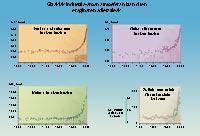Uninterrupted evolution
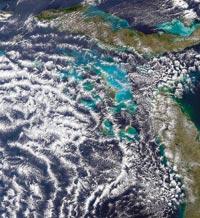
The current atmosphere is known to some as the second atmosphere. With this expression they want to emphasize that the current composition of the atmosphere is very different from the previous one.
At the beginning of the Solar System, the main gases were helium and hydrogen. The earth was forming and was drunk. It was very hot and the skin was made and dissolved, melted. On the other hand, it had no large mass and weak gravity force could not retain the gases in its environment. The solar wind carried gases and until the wind calmed down, the Earth could not surround itself with an atmosphere.
Apparently, for billions of years there was no room on planet Earth. The meteorites fell continuously from the sky and when colliding against the skin, a huge heat was released. Also abundant were the volcanoes that released gases with sulfur, other gases and water vapor. The lighter gases escaped, but over time, as the mass of the Earth increased, the force of gravity increased and managed to maintain heavy gases.
Thus came the first atmosphere. It was mostly composed of water vapor and carbon dioxide, and there was hardly any oxygen. It was charged with electricity and fearsome storms were produced.
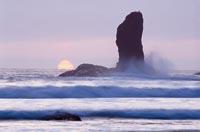
The Sun then warmed less than now, but the Earth was not icy. In fact, the atmosphere had much more carbon dioxide than now, and thanks to the greenhouse effect it caused the planet was not frozen. In addition, the temperate temperature caused condensation of water vapor. Thus, it began to rain and the oceans emerged.
The oceans modified the proportion of atmospheric gases. They absorbed a lot of carbon dioxide and many others passed to the land surface, to the rocks. Consequently, the concentration of carbon dioxide in the atmosphere decreased, which caused a decrease in temperature.
Without oxygen
However, the researchers do not know exactly what the composition of the atmosphere was then. They are old things, very old, and the traces that exist are weak and sometimes contradictory. But, undoubtedly, the composition of the atmosphere decisively influences how life appeared. Most scientists believe that in order for life to emerge from inorganic compounds it is essential that there is first possibility of forming organic molecules. To do this, the atmosphere must be reducing, without oxygen.

Today it is not possible. The current atmosphere is dominated by nitrogen and oxygen, with 77% nitrogen and 21% oxygen. Due to the amount of free oxygen, this atmosphere is oxidizing and in this environment can not produce the chemical reactions necessary for the formation of biomolecules.
In the atmosphere of that time there was no free oxygen. Oxygen was formed, such as water dissociated or released by volcanoes, but it reacted quickly with other elements. For example, a lot of oxygen disappeared when reacting with the iron of the rocks.
At one point, the first steps were taken to revolutionize the situation. Scientists do not know how, but the first living beings emerged. They, of course, did not need oxygen to live, because otherwise they were not born. However, some of these living beings are due to the accumulation of oxygen in the atmosphere. In fact, the appearance and expansion of the organisms that made photosynthesis broke the balance of gases in the atmosphere until then.
The Revolution of Photosynthesis
Revolutionary organisms are cyanobacteria. They arose on the continental coasts, 3,500-2,700 million years ago. They were not the first living beings, since the first bacteria appeared a million years earlier, but cyanobacteria were very special: they had and have chlorophyll and photosynthetic pigments, which already exist and bacteria of this type in temperate and tropical seas.
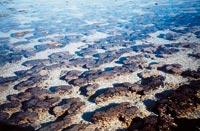
The problem is that cyanobacteria had the ability to perform photosynthesis. That is to say, using the energy of the Sun and from carbon dioxide and water, they produced glucids and oxygen. Initially, this oxygen was not released into the atmosphere as it was used to oxidize the organic carbon produced. But a small part of the organic matter, when he died, went to the bottom of the ocean, where he did not use oxygen. Therefore, there was a little free oxygen left. Gradually the ocean was saturated with oxygen and then oxygen began to flow into the atmosphere. Yes, it lasted little in the air, since the iron of the rocks was lost. However, about 2,500-2,300 million years ago the situation changed. Oxygen was lethal to other bacteria, but cyanobacteria liked, so they spread easily. Thanks to them, the concentration of oxygen in the atmosphere gradually increased, reaching equal to the current: 21%.
In this situation, bacteria were born capable of adapting to the atmosphere with oxygen. Somehow, they invented aerobic breathing. The bacteria took oxygen and thereby oxidized the molecules. They used the energy released in the reaction to meet their needs, and the waste was carbon dioxide and water.
The creation of aerobic bacteria was a masterpiece of evolution. On the one hand, a lethal gas was neutralized for the rest. On the other hand, more energy was obtained than in anaerobic reactions. Finally, the waste (carbon dioxide) could be used to perform photosynthesis. A unique move!
Maintaining balance
According to this general theory, long ago the atmosphere reached its current oxygen concentration. However, not all scientists believe that it coincided with the appearance of cyanobacteria. They seem too soon, according to them it was 600 million years ago. And they have a reason to believe it: then appeared the first complex cellular beings. They needed more oxygen to live than the previous ones, so they did not believe that there was so much oxygen in the atmosphere until then.
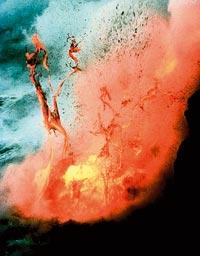
Then or before, the oxygen concentration reached 21% and since then there has been no change in the composition of the atmosphere. As the climatologist Antón Uriarte explains in his book History of the Earth's Climate, this is because as soon as a process that breaks the balance appears, there has happened another one that has brought him to his place.
For example, if, by the increase of photosynthesis, the level of oxygen in the atmosphere rises, it is possible that the rocks oxidize more than before, with which the oxygen returns to its previous level. Another alternative is the proliferation of heterotrophic microorganisms. These microorganisms feed and oxidize the dead organic matter, which would cause a decrease in oxygen. On the other hand, in an atmosphere rich in oxygen, the fire will light up easily and the fires spread dramatically. Then, as combustion consumes oxygen, oxygen would return to the previous concentration.
The opposite processes would occur if instead of increasing the oxygen concentration was reduced. To some extent, there are mechanisms to maintain the balance of gas concentrations in the atmosphere.
Top and bottom
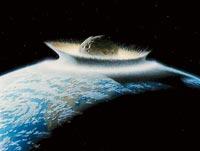
However, since then there have been variations in the composition of the atmosphere, and not of any kind. For example, many agents participated in the creation and the end of the glaciations. Among them, perhaps the change in the atmosphere would not always have been decisive, but only one or more contributed to changing the situation at any given time. What changed the composition of the atmosphere during the glaciations? There is not a single answer, since there are many options to explain it: that volcanoes or movements of tectonic plates release a lot of gases into the air, that photosynthetic life intensifies spectacularly and that they reduce carbon dioxide, that a terrible meteor place the Earth... This has occurred throughout the history of the planet and to some extent, together with other agents, could influence the origin or end of the glaciations.
There have also been incidents outside the fearsome periods of ice. For example, the decrease in oxygen concentration seems to have a great influence on the greatest destruction ever produced. In fact, at the end of Permian and beginning of Triassic, 90% of marine species and 70% of terrestrial vertebrates were lost. There are several theories that explain why this happened: that a meteor giant hit the Earth, that massive volcanoes erupted... Now, in the recent scientific journal Science, some researchers explain the effect of oxygen loss.
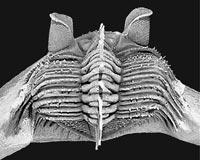
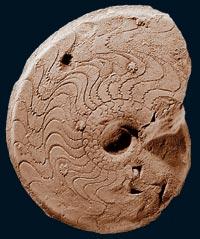
It seems that 400 million years ago the oxygen concentration increased to 30% 300 million years ago. It then fell enormously and 240 million years ago was only 12%.
This means that there was then enough oxygen at sea level at 5,300 meters in height. The lack of oxygen, of course, had a great influence on living things. In fact, the species that use oxygen need a minimum to live, for example, the human species does not exceed 5.100 meters of the Andes.
In the center of Permiar, when the oxygen concentration was 30%, it seems that the animals breathed easily at any height. But as oxygen levels drop, researchers believe that animals and plants that were previously able to live at 6,000 meters went down to 300 meters.
Some species could not adapt and disappeared. Others, despite their ability to adapt, were isolated from eroded habitats, which led them to lose them. According to the articulists, therefore, the level of oxygen directly affected the greatest disaster in Earth's history.
Question without answer
However, scientists do not only worry about the past, of course. The changes that are taking place now are also being analyzed closely, especially because they suspect they can influence the future. In fact, in the last century we are emitting a lot of carbon dioxide into the air, with which the concentration of gas has increased in the troposphere, the atmospheric layer closest to the earth's surface.

At the same time, XX. In the twentieth century the surface temperature has increased approximately 0.6 °C, according to the international IPCC group analyzing climate change. Moreover, analyzing the indirect data of the northern hemisphere, it seems XX. The increase in temperature in the twentieth century has been the most notable of the last millennium.
Besides the temperatures, there are other signs of warming of the Earth. For example, mountain glaciers have generally receded and have calculated that the snow layer has decreased by 10% since the 1960s. Likewise, the oceans have been heated since 1950 and the sea level has risen between 0.1 and 0.2 meters in XX. In the twentieth century.
Why have all these changes occurred? Are they a consequence of natural agents or does it have to see human activity? Will it influence the future? These are the main questions and there seems to be no clear answer, at least there is no absolute consensus among researchers.
Some believe that the changes of recent years are within the natural cycle or that there is not enough data to draw conclusions. Therefore, it does not seem to them that there is cause for concern. However, higher IPCC experts consider that there is a direct relationship between the increase in greenhouse gas concentration and the increase in temperature. These gases are, among others, carbon dioxide, methane and nitrous oxide, which are accumulating in the atmosphere mainly by human activity. Everything points to the climate change that is provoking.
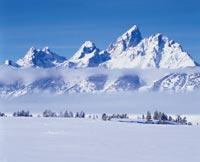
What will it bring in the future? One knows, but, according to the physicist of the UPV, Jon Saenz, who works with climate models, “without knowing what the slope is and what is in the end, I would not throw a snowball on the snowy slope.” For him, the data, conclusions and forecasts provided by the IPCC are absolutely reliable, so “it is best to act with prudence, so I consider it essential to take measures not to increase global warming.”
Oxygen cycle

The largest flows of oxygen refer to photosynthesis and respiration/decomposition. By eroding the surface rocks, the atmosphere gains oxygen, but loses a similar amount to that of the organic matter that sinks. This is the case, for example, of marine plants that go to the bottom of the oceans and the bones of animals. Likewise, the burning of fossil fuels produces the loss of oxygen in the atmosphere. Finally, photolysis is the cause of the atmosphere gaining a small amount of oxygen. In this process, solar rays break the water vapor molecules and, although oxygen remains in the atmosphere, hydrogen is lost in space.



